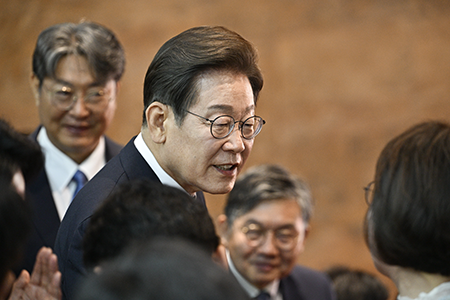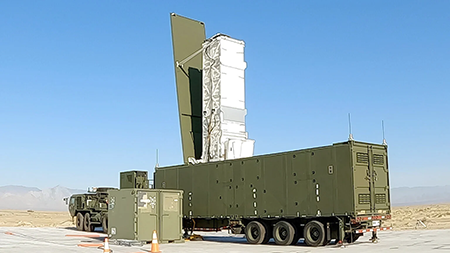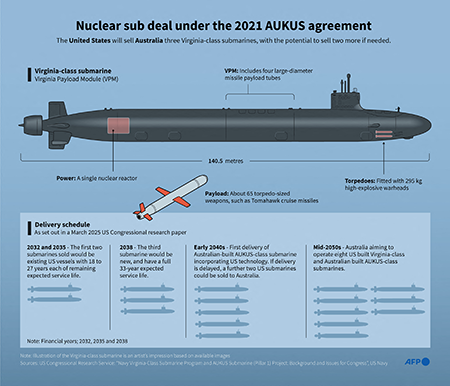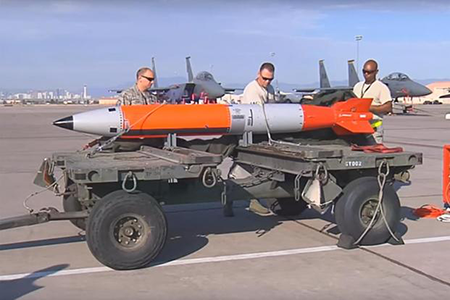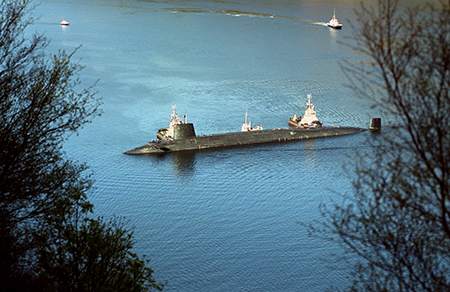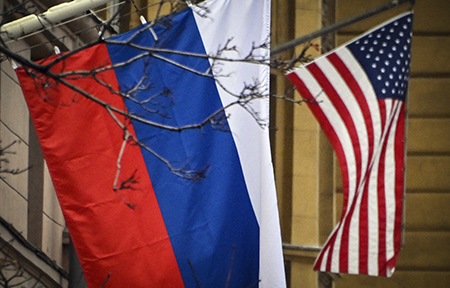Statement: E3, US Needs A More Effective Diplomatic Strategy for Iran Post-Snapback
If the E3 and the United States fail to prioritize pragmatic diplomacy in the coming weeks and provide assurance that there will be no further military attacks while bilateral talks proceed, they risk pushing Tehran closer to nuclear weapons and putting the region back on a path to war.
E3, US Needs A More Effective Diplomatic Strategy for Iran Post-Snapback
Statement from Kelsey Davenport, Director for Nonproliferation Policy, August 28, 2025
Today’s decision by the E3 (France, Germany, and the United Kingdom) to initiate the process to snap back UN sanctions on Iran that were modified as part of the 2015 nuclear deal must be paired with an effective diplomatic strategy that restarts talks between the United States and Iran. If the E3 and the United States fail to prioritize pragmatic diplomacy in the coming weeks and provide assurance that there will be no further military attacks while bilateral talks proceed, they risk pushing Tehran closer to nuclear weapons and putting the region back on a path to war.
Under the so-called snapback process outlined in Resolution 2231, which endorsed the 2015 nuclear deal, the Security Council now has 30 days to pass a resolution continuing the UN sanctions relief. If such a resolution does not pass, there will be an automatic reimposition of the UN sanctions and nuclear restrictions—including a prohibition on uranium enrichment—contained in resolutions passed by the Security Council between 2006 and 2010 as part of the global pressure campaign that contributed to the negotiation of the 2015 nuclear deal, known as the Joint Comprehensive Plan of Action. Iran has threatened to respond to the snapping back of UN measures, including by withdrawing from the Nuclear Nonproliferation Treaty (NPT)—a step that would put the United States and Iran back on a path to conflict.
To avert this crisis, the Trump administration must take advantage of the 30-day window before snapback is finalized to reach an interim agreement with Iran that stabilizes the current crisis and extends the option to snapback UN sanctions. Such an arrangement would reduce the risk of further conflict and create the time and space for the complex negotiations that will be necessary to negotiate a comprehensive nuclear deal.
In any interim agreement, the Trump administration must prioritize the return of International Atomic Energy Agency (IAEA) inspectors to Iran. IAEA Director General Rafael Mariano Grossi’s announcement that inspectors returned to Iran and Tehran’s decision to allow inspectors access to the Bushehr site is a positive step, but it is imperative that Iran meets its legal obligations by allowing the full resumption of IAEA safeguards inspections at all sites and cooperating with IAEA efforts to account for Iran’s stockpiles of nuclear materials, particularly the uranium enriched to 60 percent.
An interim deal should also take into account Iran’s legitimate concerns about further illegal attacks on its nuclear facilities and scientists by solidifying the ceasefire that ended the 12-day war between Israel, Iran, and the United States and recognizing Iran’s NPT right to a peaceful nuclear program under IAEA safeguards.
An agreement along these lines would be insufficient to resolve the Iranian nuclear crisis, but it would be a positive step that de-escalates tensions and creates time for further diplomacy to reduce Iran’s proliferation risk in the long term.
Failure to use the 30-day window to reach an agreement that staves off snapback risks putting the United States, Israel, and Iran back on the path to conflict and could drive Tehran to follow through on its threat to withdraw from the NPT, a step that increases the risk of a nuclear-armed Iran and weakens the treaty.
Despite President Donald Trump’s claims that the U.S. and Israeli military strikes set Iran’s program back by years, military action is incapable of addressing Iran’s proliferation threat. Iran’s nuclear knowledge cannot be bombed away, and Tehran still possesses nuclear capabilities and material that pose an urgent proliferation threat. And now some of those materials, including Iran’s stockpile of uranium enriched to near-weapons grade levels, remain accounted for and unmonitored. It is highly likely that Iran retains the capabilities and materials to quickly return to the threshold of nuclear weapons or weaponize if the decision were made to do so.
If Trump fails to seize this moment, he risks dragging the United States back into a military conflict with Iran, weakening the NPT, and driving Tehran closer to the bomb. It is in neither the interest of Tehran nor Washington to miss this window of opportunity to pursue a lasting diplomatic solution that verifiably blocks Iran's pathways to nuclear weapons and provides Iran with benefits in return.
###
The Arms Control Association is an independent, nongovernmental, nonpartisan membership organization dedicated to the providing authoritative information and practical solutions to eliminate the threats posed by the world's most dangerous weapons.
Kelsey Davenport is the Director for Nonproliferation Policy, and is a leading expert on nuclear and missile programs in Iran and North Korea and on international efforts to prevent proliferation and nuclear terrorism.
###
Media inquiries and interview requests should be directed to [email protected] and 1-202-463-8270 x105


